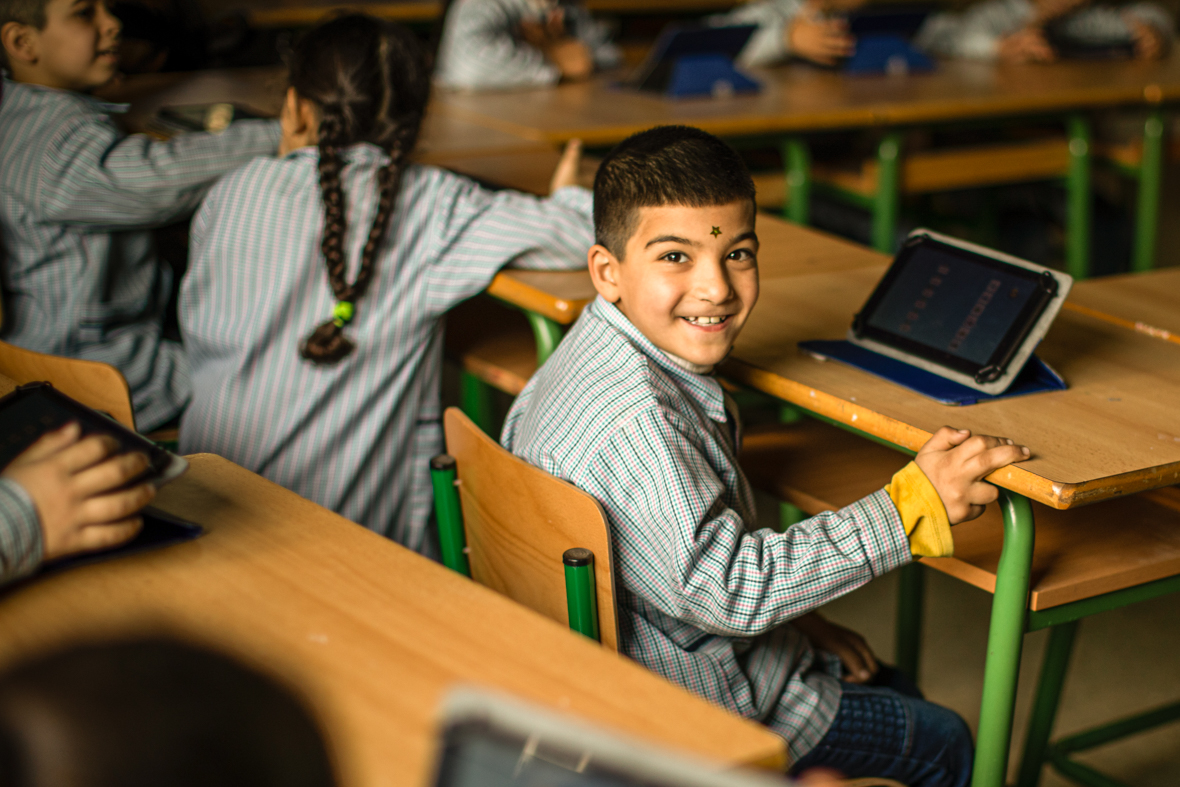
Education brings normality and hope to refugee children
Children in conflicts, Education funding, Education in emergencies
Photo: Jesuit Refugee Service
By Giulia McPherson, Assistant Director for Policy of Jesuit Refugee Service/USA
The UN High Commissioner for Refugees (UNHCR) estimates that there are 59.5 million forcibly displaced persons in the world, half of whom are children. Of those children, only half are enrolled in primary school and one in four are enrolled in secondary school. Given that the average length of displacement for a refugee is 17 years, the importance of achieving an education is critical.
Education is an absolute necessity for children in crisis. In the midst of violence and instability, school is a place of learning and opportunity, a sanctuary for healing and health, and a haven of normality and hope for the future. Education not only increases the chances that, someday, children will be able to support themselves and seek a better life for their families; it also provides them with the skills to rebuild their societies.
Despite the critical importance of ensuring that children living in conflict zones, or those displaced by war and other emergencies, have access to school, education is consistently the most underfunded and under-prioritised sector in humanitarian response. On average, education receives less than 2% of total humanitarian aid, yet as the number of conflicts and protracted crises increase globally, this is an area that will need even more attention.
The current Syrian refugee crisis provides a vivid example of the need to invest in the future of those affected by conflict. Syrians have endured more than four years of civil war and protracted displacement, with no end in sight. More than two million children within Syria and more than 700,000 Syrian children in neighboring countries are out of school.
At an October 2015 US Congressional briefing titled “Crisis in Syria: Educating Refugee Children,” representatives from A World at School, Save the Children, US Fund for UNICEF and Jesuit Refugee Service highlighted that the lack of educational opportunities risks creating a lost generation of Syrians.
The influx of Syrian refugees has led to massive overcrowding in public schools in Lebanon and other neighbouring countries, leaving hundreds of thousands of Syrian children without access to formal education and threatening their immediate and long-term well-being.
Rachel Walsh Taza, a panelist and JRS’s regional programs officer for the Middle East and North Africa, noted that increasingly desperate living conditions of refugee families have also created stressful home environments that seriously undermine their children’s education progress.
“Many children are dropping out of school so they can work to help support their family to meet basic needs,” she said. “Girls are being forced into early marriage. And transportation and other school-associated costs, such as classroom supplies and uniforms, are too high for many families to afford.”
When refugee children aren’t able to access public education, JRS runs non-formal education programmes that follow national curricula and help children improve their basic education skills in an effort to increase their chances of being enrolled in formal education institutions in the future.
The global community, including the US Government, has demonstrated incredible support and generosity in funding humanitarian response efforts globally, including assistance to the Syrian conflict. Yet more needs to be done to recognise the importance of investing in education programs for refugees and other forcibly displaced persons.
Donors must allocate humanitarian funds specifically to programmes that improve access to quality and safe education for all children in and from conflict and disaster zones and protracted crises; find creative ways of integrating children into or back into school, including through informal and alternative education; and support the development of technical, vocational and life skills training for adolescents and youth.
Longer-term efforts to strengthen existing funding mechanisms, rapidly coordinate and deliver education in emergencies, and leverage new financing should also be given urgent attention. In addition, the global community must support efforts currently underway to find a new solution to bridge the gaps between development and humanitarian aid to education, as a follow-up to the July 2015 Oslo Summit on Education for Development.
By addressing access to education for children and young people in crisis settings, we can ensure that the most vulnerable are provided with hope for the future.
More news

